In today’s competitive market, understanding your audience is not just an advantage—it’s a necessity. Segmentation unlocks this understanding, allowing businesses to tailor their strategies to distinct audiences effectively.
But how do we ensure that our segmentation strategy hits the mark?
1. Align with Business Objectives
It is of paramount importance that your segmentation aligns seamlessly with your business objectives. How do you effectively ensure you’re not just grouping customers, but strategizing with purpose?
• Focus and Efficiency: Direct your efforts towards the most relevant and impactful customer groups. Prioritize resources, strategies, and budget allocation effectively.
• Targeted Decision Making: Make informed choices in product development, marketing strategies, and resource allocation based on the distinct needs and preferences of your target segments.
• Measurable Impact: Establish clear performance metrics and make data-driven adjustments as necessary.
Overall, alignment between segmentation and business objectives ensures strategic coherence, enhances decision-making capabilities, and facilitates measurable progress toward your desired outcomes. It enables you to target the right customers, develop tailored strategies, and achieve meaningful results for your business.
2. Make Segmentation Clear & Understandable
For a segmentation strategy to be impactful, it must be easily comprehensible, both internally and externally.
Characteristics of an ‘easy to explain’ segmentation:
• Clearly Defined Segments: The segments should be distinct and well-defined, easily distinguishable from one another. Each segment should have unique characteristics, such as demographics, behaviors, needs, or preferences that make them easily identifiable and understandable.
• Fewer Segments: Ideally, the segmentation should be focused on a limited number of key segments – typically 3-5 – that have substantial differences.
• Relevant and Meaningful Criteria: It is important to explain the rationale for the segmentation clearly. Stakeholders should understand why the chosen criteria were selected and how they align with the organization’s objectives or marketing strategy.
• Visual Representation: Visual aids, such as charts, diagrams, playbooks, short videos, or infographics can greatly enhance the understanding and explanation of a segmentation. Presenting segments visually helps stakeholders literally see the differences and relationships between segments, making them easier to grasp.
• Storytelling: Tell the story behind each segment and develop a narrative that captures the audience’s attention (brings the segment to life). Structure it around the needs, behaviors, and aspirations of each segment, showcasing how the segmentation helps in understanding and addressing those aspects effectively. Storytelling makes the segmentation more memorable and relatable.
3. Effectively Socialize
A well-defined segmentation is only as good as its implementation. Ensuring organizational buy-in is crucial for the segmentation to make a genuine impact. To effectively socialize a new segmentation within your organization, consider the following strategies:
• Tailor Communications: Customize your communication approach for different stakeholder groups within the organization. Clearly explain how the segmentation relates to their specific roles or departments and the value it brings to their work. Use their language and frame the segmentation in a way that resonates with their priorities.
• Use Engaging Communication Channels: Utilize a mix of communication channels to effectively reach and engage stakeholders. Consider various options such as presentations, workshops, team meetings, newsletters, playbooks, intranet portals, or virtual communication tools. Select channels that are accessible and preferred by your audience. Incorporate interactive elements, visuals, and storytelling techniques to enhance engagement and understanding.
Conclusion: Drive Customer Loyalty
Successful segmentation starts with your business objectives and ends with a scheme of easy-to-define targets who are on their way to claiming a seat at your table for decision-making. By identifying and understanding the specific needs and preferences of these targets, you can tailor your strategies and offerings to effectively engage and satisfy them, ultimately driving business growth and fostering long-term customer loyalty.


